What Mobile App Development Team Do You Need for Your Project?

The success of a project directly depends on the app development team working on it.
As a company specializing in mobile app development, we often get questions about the mobile development team structure, the experts who should be on the team, and how to make the right choice. After all, choosing a team incapable of delivering the solutions may result in a high financial loss. According to the global revenue for enterprise application software from 2017 to 2026 the source estimates that global revenue for enterprise application software will reach 479 billion U.S. dollars in 2026.
In this article, we explain everything you need to know about building an application development team:
- Application development team roles and responsibilities
- App development vs. software development teams
- Stages of development & the app development team involved
- Team size required for a project
- Main cooperation models
- Development cost & best outsourcing locations
Let’s find out how many team members you’ll need for app development and why one developer won’t be able to build the next Uber.
App Development Team Structure

The structure of a mobile app development team depends on several factors – technical requirements, number of targeted platforms, size of the app in the works, development timelines, etc. Still, there are a few professionals on every app development team:
- Project manager
- Product manager
- Business analyst
- UX/UI designer
- iOS developer
- Android developers
- Backend developer
- QA engineer
Let’s take a closer look at the key mobile app development team roles, their responsibilities, and competencies.
Project manager
A project manager is assigned to every client in an app development company. The main tasks of a project manager are to act as an intermediate between you and a mobile app development team, track the performance of the development process, adherence to deadlines and quality standards. A project manager takes responsibility for a project from start to finish.
Competencies required for a project manager:
- Proficiency in project development methodologies
- Experience with business strategy development
- Ability to understand client’s needs and demands
- Understanding of technologies and skills required for the project requirements
- Excellent tasks management skills
Responsibilities of a project manager:
- Estimating the project cost and budget
- Allocating the development resources properly
- Prioritizing and delegating tasks
- Prioritizing and delegating tasks
- Making sure the milestones are reached effectively
- Streamlining communication between the client and the app development team
- Changes to the development strategy based on new needs
- Mitigating risks and overcoming challenges,
Summing up, a project manager needs to oversee all development stages, be familiar with methodologies of project management for app development and build communication between all stakeholders.
Product manager
A product manager role is often confused with a project manager. While they are both managers, their responsibilities are quite different.
A product manager is the owner of the product. This person is a strategist responsible for identifying new features and finding ways to improve the product to meet end users’ demands and needs better. The main task of a product manager is finding new ways to improve the product’s value and enhance user experience.
Competencies required for a product manager:
- In-depth knowledge of analytics and required tools
- Task management and prioritization abilities
- Tasks delegation skills
- Proficient marketing skills
- Knowledge of customers and business
- Documentation skills
- Problem-solving abilities
- Knowledge of persona creation techniques and approaches
Responsibilities of a product manager:
- Analyzing the market and target audience
- Identifying the pain points of users
- Defining the app’s benefits, values, and features
- Communicating a product vision to stakeholders
- Prioritizing features implementation
- Identifying and conveying a unique value proposition
- Keeping up with the latest trends
- Gathering and analyzing feedback from early users
- Streamlining operations between the sales and marketing teams
- Tracking tasks success metrics
Sometimes when dealing with small projects, the responsibilities of a product and project manager can be combined and performed by one person. However, big projects require the dedication of two professionals.
The table below highlights the key differences between a product manager and a project manager
| Product manager | Project manager |
| Conducts product research | Compiles a project plan |
| Analyzes users’ needs | Defines project scope |
| Creates a product roadmap | Provides costs and budget estimates |
| Defines features | Sets deadlines |
| Tracks product success metrics | Controls tasks delivery |
| Identifies release requirements and product updates | Adopts changes and minimizes development risks |
| Communicates product vision to stakeholders | Communicates project progress to stakeholders |
Business Analyst
A business analyst helps businesses improve processes, products, services, and software through data analysis. This person has hard and soft skills, which help them identify, analyze and report data trends.
A business analyst works closely with the development team, designers, and finance teams based on the tasks at hand.
Competencies required for a business analyst:
- Profound communication skills
- Knowledge of business structure
- Understanding of networks, databases, etc.
- Knowledge of how to create a story map, value proposition, Business Model Canvas, Product backlog
- In-depth knowledge of the following tools: Balsamiq, Adobe XD, WPS, Microsoft Power BI
Responsibilities of a business analyst:
- Assemble, document and prioritize technical requirements
- Review and analyze existing processes, define the ways to improve them
- Explore business requirements and transform them into the development requirements and tasks
- Spot, analyze and report on the latest trends
- Help clients build a strong product vision and value proposition
- Communicate ideas and important findings in the meetings
UX/UI Designer
User Experience (UX) and User Interface (UI) are two related yet district concepts. UX refers to how users interact with a product. UI refers to the visual aspect of an app interface. As a part of a mobile app development team, the main goal of a UX/UI designer is to create an intuitive, appealing, and user-friendly interface for your mobile application.
The designer makes all the decisions based on the data collected during user persona research. If users find your app difficult or confusing, you’ll face the problem of high app abandonment and low user retention.
In some application development teams, one person performs the tasks of UX and UI designers, whereas, in others, the roles are distributed between two specialists.
Competencies required for a UX/UI designer:
- In-depth understanding of UX research
- Knowledge of wireframing, UI prototyping, and interaction design
- Problem-solving abilities
- Basic knowledge of coding
- Proficient knowledge of tools such as Figma, Miro, Sketch, Invision, Adobe XD, Adobe Photoshop, Illustrator
Responsibilities of a UX/UI designer:
- Creation of a user persona
- Designing a user onboarding process
- Creation of the user flow and sketching app wireframes
- Creating visual app prototypes
- Building intuitive app interface
- Design and implement app branding (color, fonts, icons, animations, etc.)
- Make timely changes based on user feedback
iOS developer
Depending on your target audience and budget, you can build an iOS app, an Android app or create apps for both platforms. Either way, you’ll need to separate your iOS development team from your Android development team.
iOS app developers are responsible for the technical part of the mobile creation process. They turn the design into a working app for devices by Apple and iOS and iPadOS operating systems.
Competencies required for an iOS app developer:
- Knowledge of the Objective-C or Swift programming languages
- Knowledge of Xcode IDE – the main development environment for iOS, iPad OS, and macOS apps
- Practical knowledge of Apple Human Interface Guidelines
- Knowledge of how to build apps for the last-gen Apple devices and versions of operating systems
Android app developer
Just like iOS developers, Android app developers are responsible for creating high-performing, responsive and secure mobile applications. While their responsibilities are quite similar, they need to have different competencies and knowledge of development tools.
Competencies required for an Android app developer:
- Knowledge of the Kotlin and Java programming languages
- Experience with Android Studio, the IDE for Android app development
- Practical knowledge of XML, Material Design, and databases
- Knowledge for to create apps for different Android versions, devices, and screen sizes
While the competencies of iOS and Android developers are different, their responsibilities are quite the same.
Responsibilities of an iOS and Android developer:
- Translating mockups and wireframes into code
- Developing reliable, high-quality, secure, and responsive applications
- Knowing how to create responsive apps for different screen sizes
- Ensuring apps have the best performance
- Staying up-to-date with the latest technology trends
- Identifying and fixing bugs
Backend developer
A backend developer is responsible for all the magic happening under the roof of a mobile application. The developer keeps the servers running and manages cloud storage and operational logic.
Competencies required for a backend developer:
- Knowledge and experience with programming languages like Java, Python, PHP, Ruby, or .Net
- Experience with code versioning tools like Git
- Knowledge of data storage and management
- Experience with data management tools and technologies such as MongoDB
- Server-side experience – LESS, SASS
- Knowledge of server compliance
- Practical knowledge of OOPs
Responsibilities of a backend developer:
- Developing the communication logic between interface and backend infrastructure
- Implementing security, and presentation layers of an app
- Design and build data storage solutions
- App architecture and framework development
- Creating device-specific operating logic
- Using IDEs and collaborative tools
- Optimize the app for maximum speed
- Testing and debugging the backend
QA engineer
A Quality Assurance (QA) engineer is responsible for delivering a high-quality application. QAs monitor every stage of mobile app development to ensure the design and code adhere to the project requirements. A QA engineer is an integral part of a mobile app development team. The main task of a QA is to spot any bugs before release of the app or new features.
A QA engineer can perform different types of testing, such as quality assurance, performance testing, integration testing, regression testing, etc.
Competencies required for a QA engineer:
- Knowledge of different types of testing: automated, unit testing, performance testing, etc.
- Deep knowledge of testing tools, such as TestComplete, Appium, Robotium
- Experience with features and bug tracking systems, such as Jira and Trello
- Critical thinking, problem-solving skills, attention to detail
Responsibilities of a QA engineer:
- Plan, develop and execute test cases for different parts of the app
- Perform automated and manual app testing
- Document test cases
- Track bugs
- Identify potential challenges for users
- Develop testing standards to keep the app up to quality standards
- Ensure the final product meets the client’s requirements
Now that you know app development team structure, let’s take a look at another interesting point – the differences between a mobile app and software development team.
App Development vs. Software Implementation Team Structure
As you know, you’ll need to gather an app development team based on your project. For example, the website development development team structure will be different.
First of all, to perform website development tasks, you’ll need to hire a frontend developer instead of an iOS or Android developer. The frontend developer will be responsible for translating the design into web pages and implementing all the functionality visible to end-users.
To develop complex software, like a record system for a medical institution, you might need to hire a DevOps engineer and software architect.
A software architect builds the development team and defines which processes and technologies the development team should use. Software architect provides architectural blueprints, identifies and troubleshoots coding problems, and collaborates with other members of the software development team to produce a high-performing and secure software solution.
A DevOps engineer is responsible for shortening the system development life cycle and providing continuous delivery of high-quality software.
Your software development team structure will depend on the project you create, its size and expected deliverables. As the project grows and evolves, you might need to adjust the team composition to meet the new requirements.
Mobile App Development Team & Stages of Development

As you already understand, mobile app development is a process consisting of different stages. Each stage is associated with certain tasks and requires the involvement of certain specialists.
Let’s take a look at the main stages of the development process and the mobile app development team members needed.
Stage 1: Discovery Stage
The discovery stage is about defining the concept of your future app to understand if the target audience would be interested in your application. During the discovery stage, you define the goals of your future app, values, and features, and explore the target audience.
The discovery stage involves a few specialists – a project manager, a product manager, and UX/UI designers.
A project manager is a key figure responsible for managing the app development process. A product manager is responsible for market research, identifying the needs and expectations of target users, the Unique Selling Proposition (USP) of the future app, and the process of how the app will generate revenue.
You’ll also need to involve a UX/UI designer in the brainstorming process. The designer will help you create a business concept and visual mockup of your future application. You need the deliverables of the discovery stage for the next app development phase – idea validation.
Stage 2: Idea Validation Stage
During the idea validation stage, you need to see how the target audience will react to your application. You’ll need to use the app concept you’ve created during the discovery stage to gather user feedback. If you get positive feedback from the target audience, you can start working on a medium-fidelity app prototype with a detailed visualization of UX design and user flow.
The validation stage of app development also involves presenting the app concept to the mobile app development team and the stakeholders. This will ensure that everyone stays up-to-date on the vision of your future product.
Stage 3: UX/UI Strategy
At this stage, you’re ready to start working on the detailed user experience and user interface design. The high-fidelity app prototype should be interactive to allow testing user flows, the app’s navigation, and overall app usability.
Designers prepare everything needed for the development of the future application. The key deliverables of this stage are the high-fidelity app prototype.
Stage 4: App Development
At this stage, developers start translating the design into the code to create the Minimum Viable Product (MVP). MVP is a product containing the key features of an app that are enough to release it to the market and gather user feedback required for the development of a fully-fledged product.
App creation is a joint effort of the whole development team – iOS and Android developers, backend developers, UX/UI designers, project and product managers.
The main deliverable of this stage is an app developed based on business requirements and the UX/UI design provided by designers.
Stage 5: Testing & Improving
Mobile app development involves continuous testing and improvements. There are different approaches to app testing. QA engineers can test new features as soon as the development team stops working on them or test the whole app after the development is over. Usually, two approaches are combined to ensure no bugs will be released together with the application.
This phase of app development involves the whole team that’s working to deliver all the necessary iterations.
Below is the table summarizing the key development stages, members of the app development team involved, and their responsibilities. As you can see, the creation of an app is a team effort and a process that doesn’t end with the release of the app to the market.
| Stage | Team structure | Responsibilities |
| Discovery stage – creating the concept of an app idea | Project manager Product manager UX/UI designer |
|
| Idea Validation – making sure the app concept meets user requirements | Project and Product managers UX/UI designer |
|
| UX/UI strategy – creation of user flows and app’s interface | UX/UI designers | Designers work on the creation of user flows, branding elements and visual interface of the app |
| Development – translating the app prototype into a working solution | Product manager UX/UI designers Android & iOS developers Backend developers | The whole team works to create the first version of the app. Developers play the main role in translating the UX/UI prototype into the app’s code |
| Testing & Improving – hunting down bugs and eliminating them before app release | QA engineers iOS and Android developers UX/UI developers Product and project managers | Quality assurance engineers are working full-time to ensure the first app version is ready for release. The whole team is involved to make the necessary changes to the application |
| Ongoing development and support | Product and project managers UX/UI designers Android & iOS developers Backend developers QA engineers | Mobile app development doesn’t end with the app’s release to the market. After getting feedback from early adopters, the development team can plan further app development and improvements |
App Development Team Size
Let’s start with answering the most interesting questions – can one person create an app?
One person can create a simple application. However, that person should be a tech guru to handle all the processes involved in app creation – from design to development and quality assurance.
In most cases, you need a team to create a mobile application.
But the question is, how do you choose the right development team size?
The mobile app development team you need depends on a few factors:
- Mobile platforms you’re targeting
- App and features complexity
- App development timelines
- Financial resources
Also, the team size will depend on the size of the app you’re going to build:
- Simple apps with a basic set of features and interface design
- Medium app with more complex functionality and design
- Complex app provides users with interactive design, several complex features, integration with third-party solutions, such as payment systems.
Usually, the application development team consists of the following professionals:
- 1 project/product manager
- 1 UX/UI designer
- 1 iOS developer
- 1 Android developer
- 1 Backend developer
- 1 QA engineer
If you compose such a team, the development process will take:
- 2-6 months for the simplest app
- 6-9 months for a medium app
- 9+ months for a complex app
If you have enough budget and tight timelines, you can always add more team members to speed up the development process and launch the app to the market faster.
App Development Team: Cooperation Models
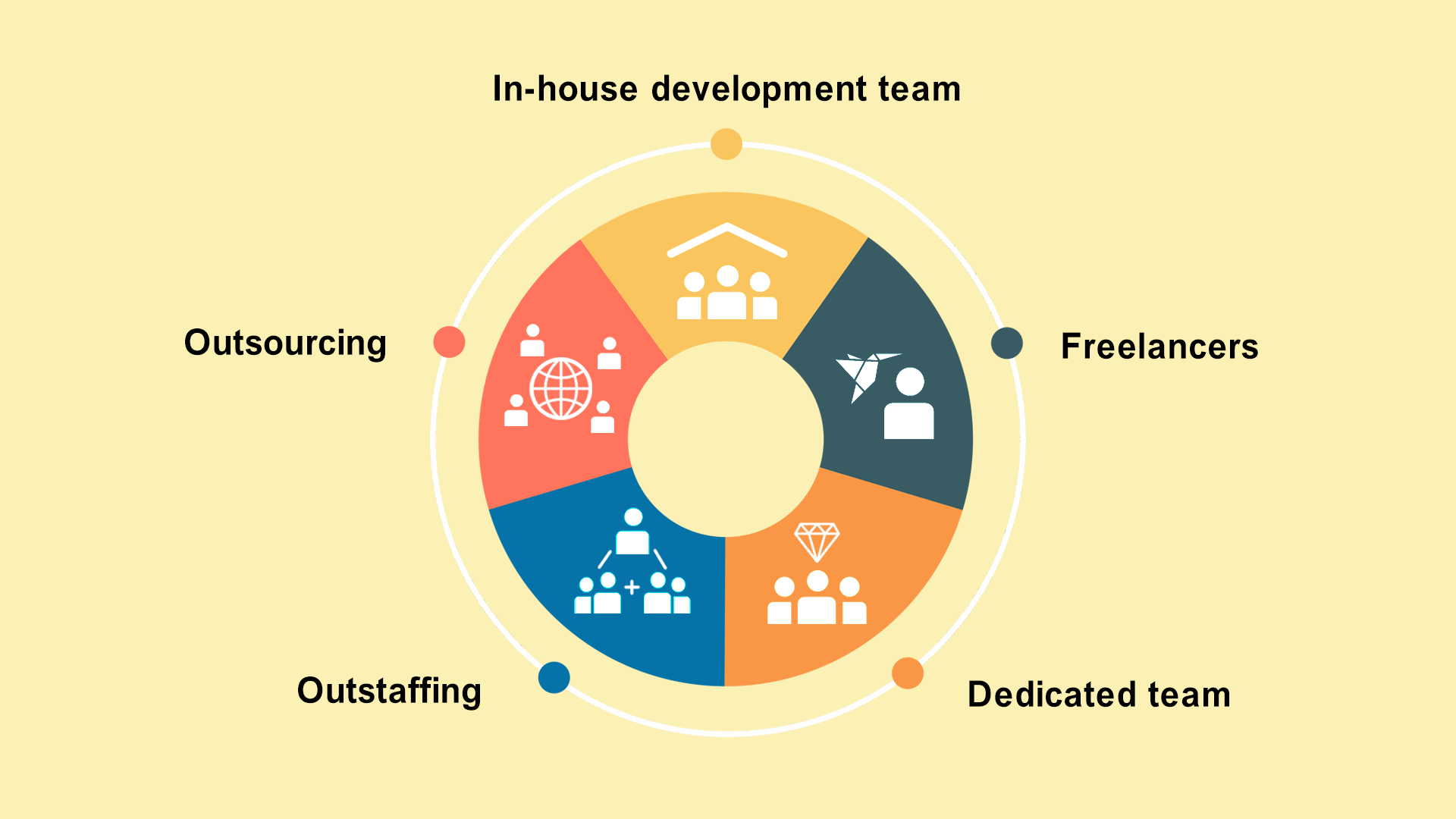
When you decide to build an app, you need to find an application development team to implement your project. There are a few cooperation models that offer different levels of the team’s involvement in app development, how much time they dedicate to your project, and who manages them.
Let’s take a look at the key cooperation models.
In-house application development team
In-house developers are working in your office on your project full-time. Having all the experts in-house gives you full control over your mobile app development team and the associated processes. However, you need to deal with the recruitment process yourself.
Freelancers
Businesses usually hire freelance developers to cover a small, one-time task. You can find freelancers on such platforms as Upwork or Fiver, depending on your tasks.
Dedicated app development team
You can hire a mobile app development team to work on your project full-time through a third-party vendor. They will fully focus on your project while officially being employees of the vendor you decide to corporate.
Out staffing
You can use the out staffing services if you already have an application development team but lack some talents. You can hire a development company to provide you with one or a few experts to complement your in-house team with the required talent. While they will be employees of the vendor, experts will work on your project as a part of your team.
Outsourcing
Outsourcing is one of the most popular ways of building new products. You can hire an outsourcing vendor to build your application from the ground up to the successful release of the app to the market.
Outsourcing allows companies to speed up the development process and cut expenses. Since outsourcing companies have various experts, you won’t have problems finding and hiring the rarest talents.
Take a look at the table below showing the key advantages of disadvantages of each mobile app development option.
| Cooperation model | Pros | Cons |
| In-house app development team |
|
|
| Freelancers |
|
|
| Dedicated application development team |
|
|
| Out staffing |
|
|
| Outsourcing |
|
|
The cooperation model you choose should depend on your project type, timelines and preferred cooperation model. While some companies are comfortable working with outsourcing teams, others prefer working with dedicated development teams.
What is App Development Team Cost?
Mobile App development cost depends on several factors:
- Region where the team is located
- Cooperation model
- Type of employment (full-time, part-time, hourly)
- Project scope
Outsourcing location is one of the factors that influence the cost of app development mostly. All because of different hourly rates across the world. For example, hourly development rates in the USA are around $120-$150. You can hire developers in Europe at an hourly rate of $50-$100. If you outsource app development to Canada or the United Kingdom, the costs will rise to $150-$200.
The map below shows the average hourly rates for different regions in the world.
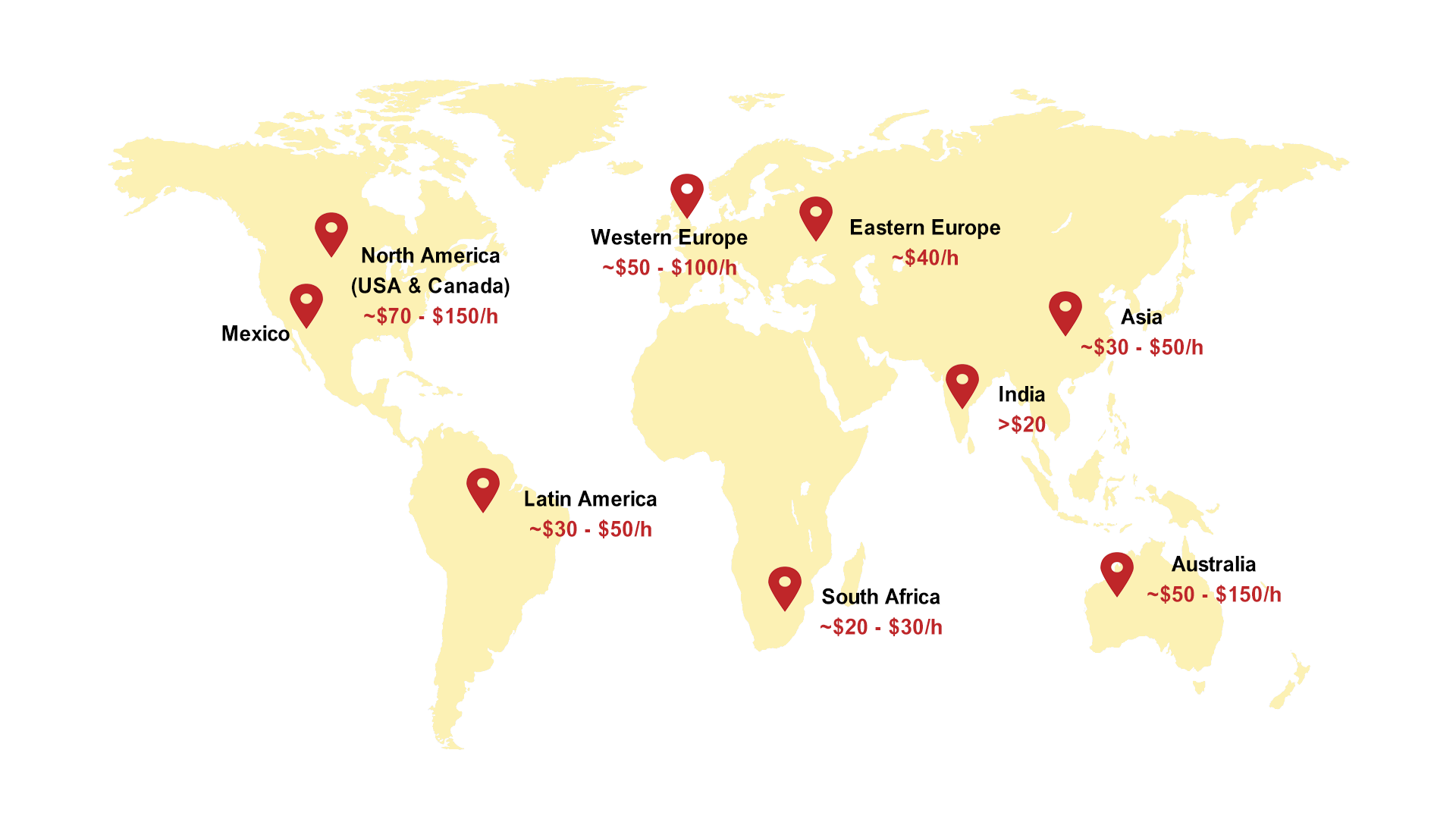
By hiring experts from less expensive regions, you can cut the development cost by a few times. For example, you’ll need to pay twice as much for a mobile app development team from the USA than for a team from Europe. If you decide to outsource to companies from Europe, you’ll cut the development cost significantly without sacrificing the development quality.
Hire a Mobile App Development Team: Wrapping Up
In this article, we’ve shared some insight into building an application development team.
Here are a few key takeaways from the article:
- Usually, a mobile development team structure includes the following experts: a product or project manager, business analyst, UX/UI designer, iOS developer, Android developer, backend developer, and QA engineer.
- The composition of a mobile app development team depends on the project scope, the platforms you’re targeting, project deadlines, and the functionality you need to implement.
- While a single person can create an app, it usually takes an app development team to build and release a mobile application to the market.
- A lot of factors influence the cost of building an app, such as the outsourcing location, team composition, and project complexity.
App Development Team, Mobile App Development Team, Apps Developer, Multi Screen Apps, Video Meetings, Apps for Doctors, Make a Chatbot, Mobile Healthcare, Mobile Business, App Like Instagram, Theme, Cloud Based Application, Development Team, Cross-Platform, App Framework, IT Outsourcing, AI Chatbot, App development,
Building Your Dream App
Navigate the essential roles for your mobile app development team
Our Expertise Covers:
✅ Project management and strategy
✅ UI/UX design and development
✅ Backend and frontend engineering
FAQ
The app development team should be as big as the project requires it to be. Sometimes, adding more team members allows you to speed up the development process and deliver the app to the market faster. Still, not every project needs to have a few developers. For some, it’s enough to have a developer, project manager, UX/UI designer, backend developer, and a QA engineer.
Honestly, no company discloses the development costs of app development. That’s because it’s impossible to say the number without knowing all the project requirements. The final cost you’ll need to pay will directly depend on the project you’re building and the outsourcing location you’re choosing. Usually, app development costs start at around $60,000 for a single platform (iOS or Android) with a basic set of features.
There are a few collaborations you can choose from. You can hire an in-house team to work from your offices. You can outsource app development to a third-party vendor that will also manage the project. You can also get a dedicated development team or rely on out staffing for hiring particular talents.
Usually, a mobile app development team comprises the following experts: a product/project manager, business analyst, UX/UI designer, iOS developer, Android developer, backend developer, and QA engineer.
While it’s possible for one person to create a mobile app, it usually takes a whole team to do the job. The development of a mobile application requires different skills – from business analysis and UX/UI design to knowledge of programming languages and app testing approaches.


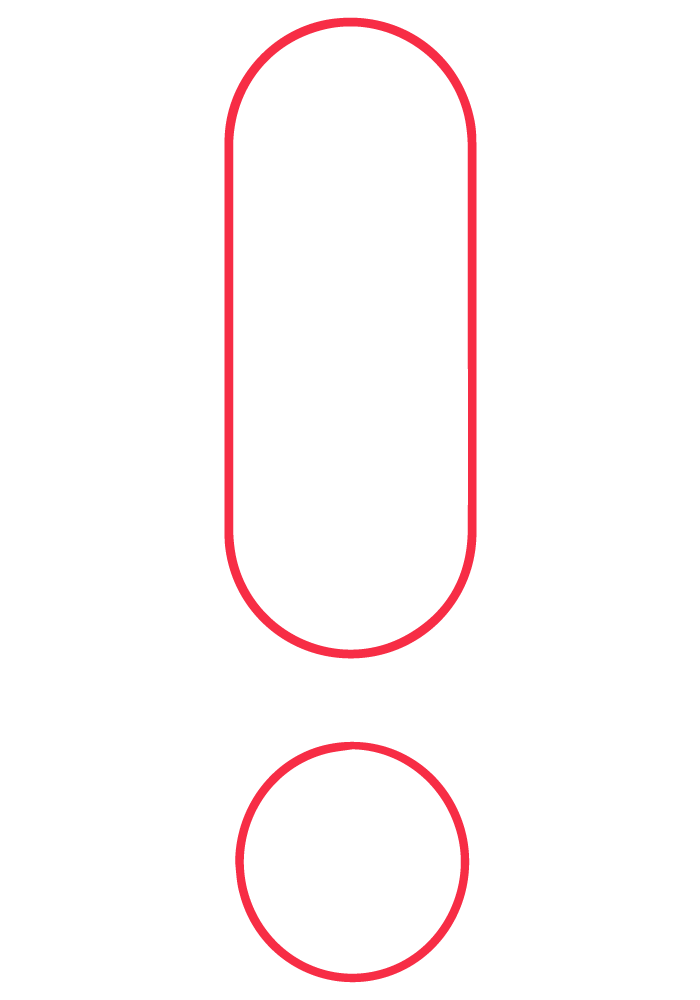

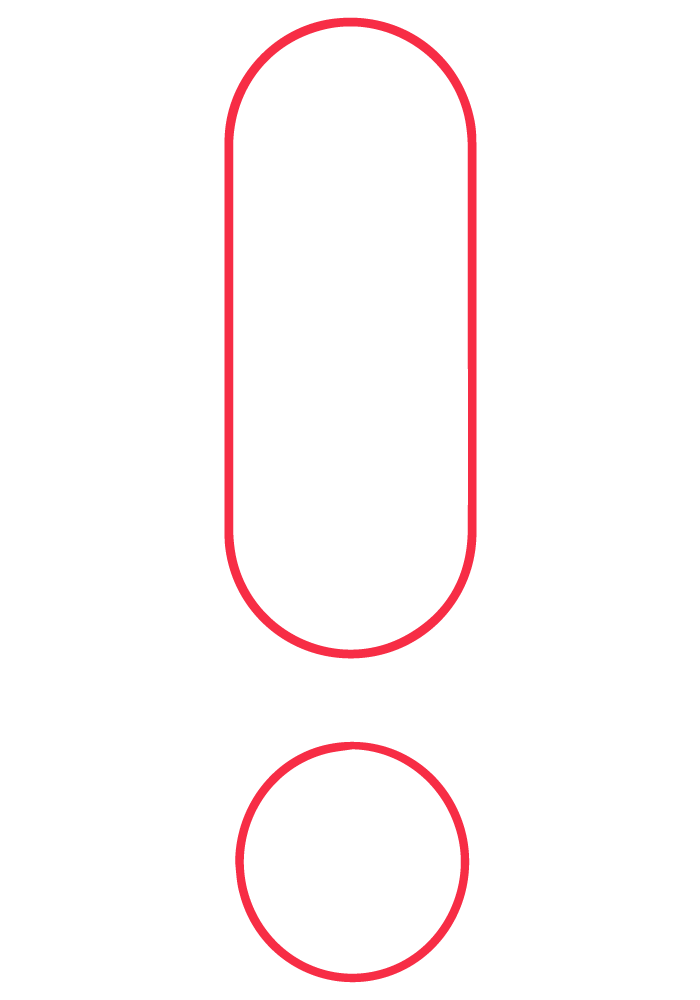
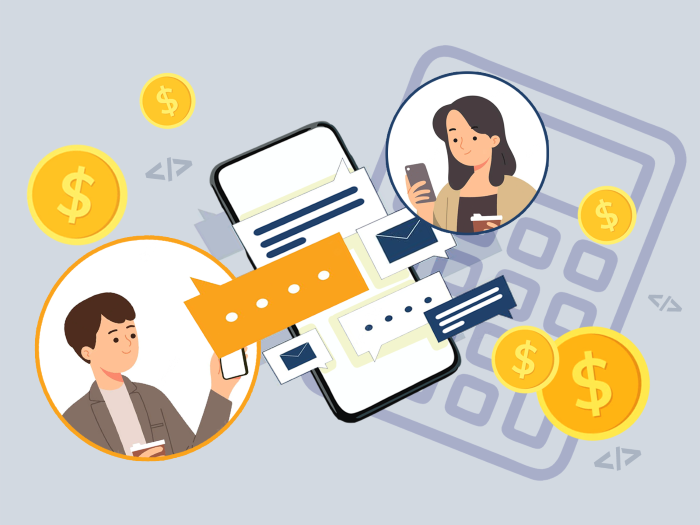 How Much Does It Cost to Build a Messaging App?
How Much Does It Cost to Build a Messaging App?
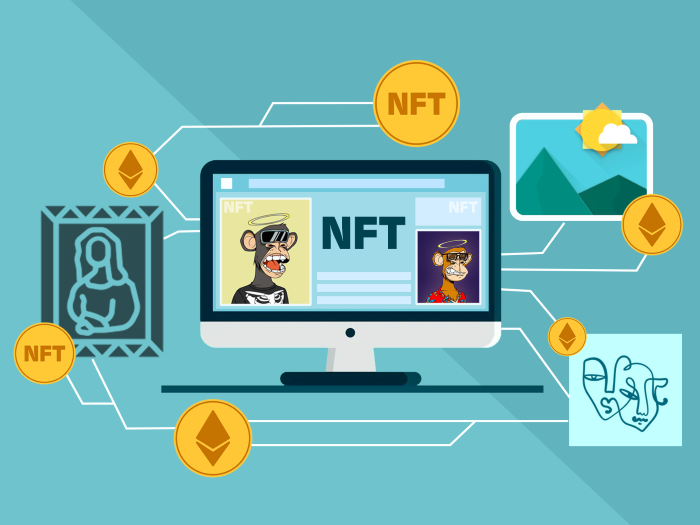 How to Create an NFT Marketplace: Development Guide
How to Create an NFT Marketplace: Development Guide
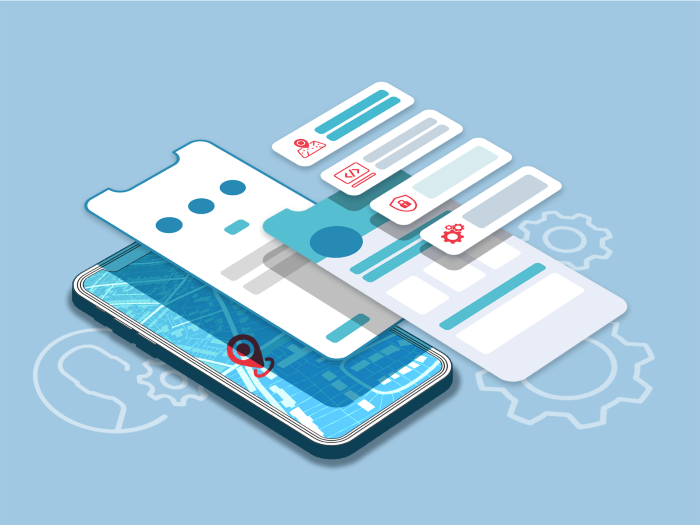 Must-Have Uber App Features: Building a Ridesharing App
Must-Have Uber App Features: Building a Ridesharing App